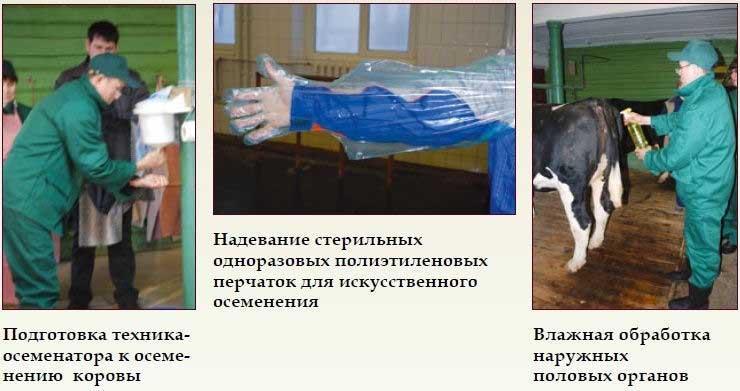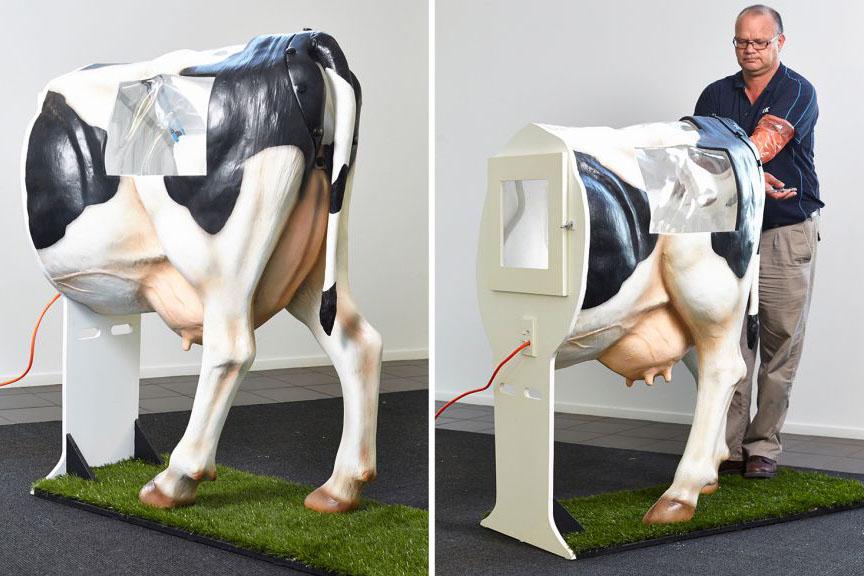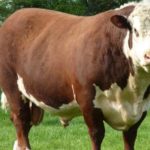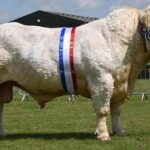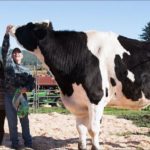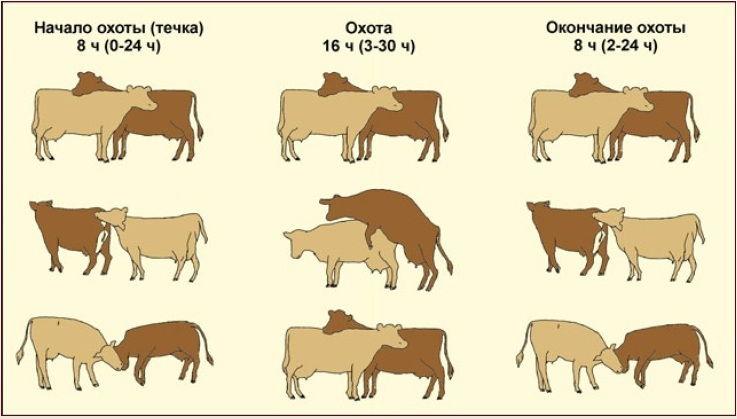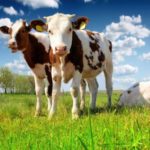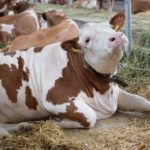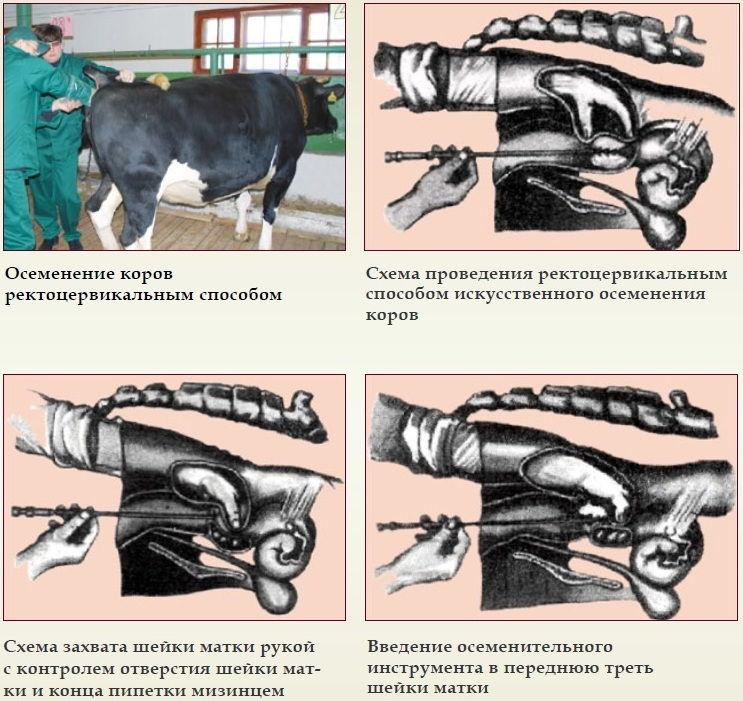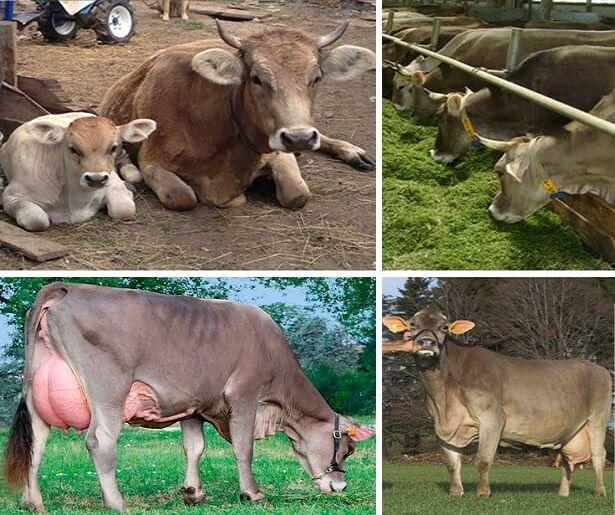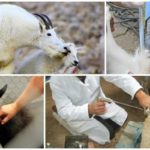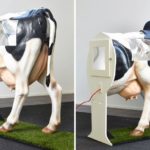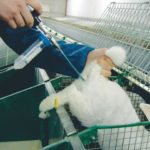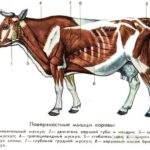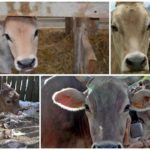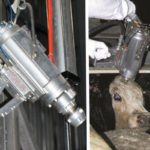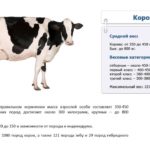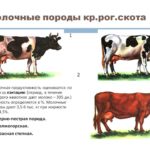Insemination is the introduction of bovine sperm into a cow's reproductive tract to achieve conception. Cattle are fertilized by natural mating and artificial insemination, and the second method is more in demand in large livestock farms, as it is effective and does not require much time. The inseminator is engaged in artificial insemination of cows - a qualified worker who must know the rules of handling animals and the subtleties of the safe procedure.
- Advantages and disadvantages
- When and how many times should artificial insemination be performed?
- Preparation for the process
- What tools and materials will be needed
- Bull selection
- How to identify a cow that is ready for insemination?
- Insemination methods and techniques
- Further care of the animal
- Signs of successful insemination
- Possible errors and difficulties
Advantages and disadvantages
Artificial insemination is a convenient and popular method of fertilizing cattle.
When and how many times should artificial insemination be performed?
For successful artificial insemination, it is important to determine the optimal time for the fusion of germ cells. To do this, several nuances are taken into account:
- A cow's egg is ready to merge with a sperm no longer than 10 hours. After this time, the aged cell becomes non-contact, and if fusion occurs, the risk of pathological development of the embryo increases. Therefore, sperm must enter the cow's reproductive tract before ovulation.
- The sperm must break through the membrane of the egg. This takes 4-6 hours before ovulation.
- Bovine sperm live for 2 days during natural fertilization, and one day during artificial fertilization. Therefore, you need to prepare seed material for the procedure a day before ovulation.
The optimal time for artificial insemination is 3-4 am. At this hour, ovulation slows down, corresponding to the day after the end of the rut. If heat is in the morning, then insemination should be in the evening - at 18-19 hours.
Sperm is injected before milking or at least 2 hours after it. It is impossible earlier than 2 hours: the cow’s brain sends a signal that causes the uterus to block the acceptance of sperm.
Preparation for the process
The first thing you need to do is clean the room. As disinfectants, it is necessary to use preparations without aggressive chemical components. The stall should be cleared of manure and dirty bedding and sprayed with water from a hose under pressure.
The veterinarian must examine the cow and do an analysis to ensure there is no infection. The area of the tail, vulva, anus, and inner thighs is washed with warm soapy water and wiped with a clean cloth. If rectocervical insemination is planned, then a rectal examination is performed to check for the absence of inflammatory foci, and feces are removed from the rectum. The vagina is treated with Furacilin antiseptic solution.
Tools are disinfected with drugs or fire. The inseminator, after washing his hands with soap, puts on sterile rubber gloves, lubricates them with medical alcohol, then with Vaseline.
What tools and materials will be needed
Artificial insemination is carried out in a separate room with an arena, a department for preparing the cow, and a laboratory department.
Arrangement and equipment of the premises:
- the arena is equipped with machines that secure the cow for safe manipulation;
- in the laboratory department there is a catheter, a syringe, containers with biomaterial, a microscope;
- in the preparatory department there is a sink, disinfectants, and work clothes.
Bull selection
Both with natural mating and with artificial insemination, bulls are more significant for the formation of breed qualities of future offspring than cows. Over the course of a year, one inseminator becomes the parent of several hundred calves.
The main indicator of bull selection is pedigree. The breed qualities of the manufacturer are assessed over three generations. A good bull should be the offspring of females with high milk production and milk fat content, and males with productivity genes. The second indicator is the physique and body weight of the cattle. A bull suitable for insemination is characterized by developed muscle mass, strong and fleshy hind limbs, and large reproductive organs. You should also take into account the quality of sperm, the percentage of viable sperm.
How to identify a cow that is ready for insemination?
A cow that has entered heat changes its behavior:
- worries, shows aggression;
- rushes around the paddock, pasture;
- eats poorly;
- breathes quickly;
- shows interest in individuals of the opposite sex;
- puts his head on the back of other animals;
- tries to lick the genital area of other chicks;
- your well-being is affected by increased heart rate and increased body temperature;
- milk yield decreases.
The cow's hormonal cycle resumes after 18-24 days. The cycle is divided into 3 phases: excitement, relaxation, balance. The first phase is the time of egg maturation. Estrogens are released into the blood and estrus begins. Sexual hunting lasts 10-20 hours. During this period, the vulva swells and turns red, first a clear liquid flows out of the vagina, then viscous and viscous mucus, sometimes with blood streaks. The cervix opens slightly, its muscles relax.
To identify a cow in heat, a test bull is released into the herd. The method is optimal for large populations. The sampler is a sexually mature male whose seminal canals have been surgically clamped. It is enough to introduce one bull into a herd of 100 females. A dye mark is attached to the male's neck. Cows whose backs are colored after a walk with a bull are in heat.
There is a phenomenon of false heat, when a cow is worried and interested in males outside of ovulation. The reasons for this phenomenon are different, but more often it is associated with the formation of cysts in the genitals.
Large farms also practice other methods of determining heat in a cow:
- measurement of vaginal and rectal temperature;
- study of crystallization of cervical mucus under a microscope;
- analysis of cow activity and behavior;
- measurement of electrical resistance of vaginal tissues (it decreases significantly during ovulation due to increased humidity).
Insemination methods and techniques
There are 4 methods of artificial insemination of a cow. In each case, the injection of seminal fluid into the uterus is implied; the differences lie only in the technique of administration. The sperm should have a temperature of 36-38 °C.
| Insemination method | Tools and materials | Execution technique | Notes |
| visocervical | 4 containers with tight lids (1 – with sodium chloride solution, 2 – with 70% alcohol, 3 and 4 – with sodium chloride), catheter, illuminated mirror, container for waste liquids | the instruments are alternately treated with 4 solutions, a warm speculum is inserted into the cervix, a catheter is inserted 4 cm into the cervix, sperm is injected, the catheter is removed, then the speculum | the operator performing the procedure must be qualified, as there is a high probability of injuring the cervix |
| rectocervical | catheter, long veterinary gloves for insemination | a gloved hand is immersed in the anus of the cow, the genitals are felt, the catheter is inserted into the genital tract with the other hand, the hand in the rectum is clasped around the neck, the tip of the catheter is felt, the instrument is moved deeper into the neck 5-8 cm, the sperm is injected, the catheter is removed | fertilization will be successful only if the walls of the cervix are relaxed, otherwise the sperm will not be able to penetrate the uterus, and insemination using the rectocervical method may result in injury |
| manocervical | catheter, sterile ampoule with sperm, veterinary gloves | a gloved hand is immersed in the genital tract, the vagina is massaged for about 2 minutes, a catheter with sperm is inserted into the cervix, advanced 6-8 cm, sperm is poured into the relaxed uterus, massaged again for the sperm to be accepted by the uterus, the hand is carefully removed from the vagina | the method is not applicable at home, the cow is taken to an insemination point, the vaginal method of introducing sperm is not for beginners, the inseminator must be trained and know the anatomy of the genitourinary system of cattle, the technique is not suitable for insemination of young females with a narrow vagina |
| epicervical | catheter, veterinary glove | a gloved hand is immersed in the anus, the uterus is massaged through the colon, a catheter is inserted, sperm is poured into the vagina closer to the cervix, the catheter is removed, the clitoris is massaged for the uterus to accept sperm | the method is used for insemination of previously nulliparous females, as well as individuals with small body dimensions |
Further care of the animal
For artificial insemination to be successful, the cow is provided with peace and quiet after the procedure. A separate clean stall is prepared for her, and the daily portion of food is increased.
The animal is under careful observation for half a month. If there is no deterioration in health, then the cow is united with the rest of the herd.
Signs of successful insemination
Successful artificial insemination is determined in the following ways:
- rectal or vaginal examination;
- by a change in the cow’s behavior - after about 10 days she begins to avoid the bulls;
- by the absence of another heat cycle;
- According to a blood test on days 20-23 after insemination, pregnancy is indicated by an increase in progesterone concentration.
A cow carries a calf, like a woman, for 9 months. External signs of pregnancy become noticeable after about a month. If insemination is unsuccessful, then a new heat begins. In this situation, repeated artificial insemination is performed. A total of 4 attempts are made, if all are unsuccessful, then the cow is diagnosed with a “functional disorder of the reproductive organs.”
Possible errors and difficulties
Inexperienced inseminators often make serious mistakes, due to which artificial insemination is unsuccessful, and the cow is injured or the worker is injured. The main mistakes and difficulties that arise during artificial insemination of cattle:
- Failure to comply with hygiene rules and unsanitary conditions. Using unsterilized instruments, which leads to infection of animals.
- Ignoring the need to examine the cow for readiness for fertilization and the absence of inflammatory processes.
- Accidentally touching the catheter with Vaseline-smeared gloves. Vaseline acts as a spermicide, destroys sperm, and as a result fertilization does not occur.
- Incorrect temperature conditions for storing sperm.It must be stored in liquid nitrogen.
- The use of an obliquely cut ampoule, due to which the sperm flows not into the cervix, but into the syringe.
- Incorrect advancement of the catheter, getting it into the urethra. The correct catheter direction angle is 30°.
- The catheter is immersed too deeply, which can cause injury to the uterine walls.
- Squeezing sperm not into the cervix, but into the blind pocket surrounding it.
- Rough treatment of a cow. The animal either goes berserk, injures the offender, or does not become pregnant due to stress.
To avoid the above problems, farmers should hire inseminators with experience, qualifications, excellent knowledge of cattle anatomy and a high reputation. The specialist is also required to be able to accurately identify the period of heat in a cow.

